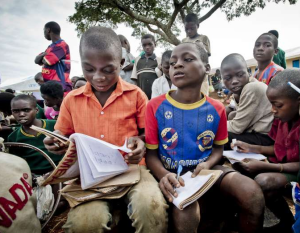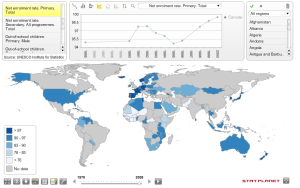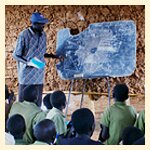 Students with limited formal schooling comprise a small subgroup of English Language Learners. For a variety of reasons related to war, environmental disasters, civil unrest, or political instability, they have attended school sporadically, if at all. They have minimal schooling in their native language, and low levels of literacy and numeracy. Most students of this profile are refugees who have had disrupted schooling due to time spent moving between countries, or time spent in refugee camps or enclaves of displaced people for several years. Schools may have been closed or unsafe. Children may have been denied education due to their gender, their ethnicity, their inability to pay fees, or to being victims of forced labour or forced military service. For more detail see: Characteristics, or Links: Cultural Profile.
Students with limited formal schooling comprise a small subgroup of English Language Learners. For a variety of reasons related to war, environmental disasters, civil unrest, or political instability, they have attended school sporadically, if at all. They have minimal schooling in their native language, and low levels of literacy and numeracy. Most students of this profile are refugees who have had disrupted schooling due to time spent moving between countries, or time spent in refugee camps or enclaves of displaced people for several years. Schools may have been closed or unsafe. Children may have been denied education due to their gender, their ethnicity, their inability to pay fees, or to being victims of forced labour or forced military service. For more detail see: Characteristics, or Links: Cultural Profile.
There may also be students with limited formal schooling who are not refugees. They may have entered Canada as Permanent Residents or as the children of temporary residents. They may have attended school in their country of origin, but experience gaps in their educational experience as a result of their school system having limited resources, poorly trained teachers, a narrow curriculum, a shorter school year, etc. They may also have moved within and between countries and had to change the language of instruction. They may have limited literacy as a result of coming from a language background that has no written form, or in which writing is a relatively new phenomenon.
Click on the image above to access interactive maps with statistical information about many demographic and economic factors. Select the “education” tab to see what proportion of countries’ populations attend school.




